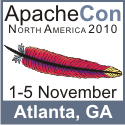In the early aughts, I purchased a copy of the game Civilization III for my Mac. I have played it ever since, especially after I learned that its copy protection code would mistake a mounted disk image of its CD for the real thing so I could run it without a CD in the drive (no funny business here: I still have the CD and in fact recently came across it). A great casual game, suitable for mindlessly clicking away, I used to play it on the bus home from work. Another regular commuter even accosted me once saying “You’ve been playing that same game for years! Haven’t you ever thought of getting a different game?” I still occasionally play it even though I have several versions of its successor Civilization IV, because III is easier on the battery and improved copy protection in IV doesn’t fall for the disk image trick. Now, its long tenure is coming to an end. Apple is releasing OS X Lion and retiring the PowerPC compatibility layer. Goodbye Civilization III, you will be missed.
However, this post is not about Civilization III. It’s about the only other application I use that requires PowerPC compatibility: Quicken 2007. I have now used it for over ten years to manage my finances, track my investments, time and pay my bills, and forecast savings. A couple of weeks ago, Intuit sent out a notice to the effect that Quicken 2007 would not be compatible with Lion, and support for it (such as it was) would end. Customers were advised to migrate to Quicken for Windows (ha!) or Quicken Essentials, their long awaited ground-up rewrite that does take advantage of current SDKs and runs natively on Intel Macs.
Unfortunately, Quicken Essentials has significant feature discrepancies compared with the older product. It has no bill pay feature. It also can’t track investments: the web site suggests that you manually enter stock and fund prices which seems to me a slightly less fun proposition than drying untreated wooden plates and spoons with a tea towel. Finally, Intuit states that they “ we are evaluating options for Quicken Essentials for Mac”, which to me sounds like “It’s dead but we won’t tell you yet because we want to get some more revenue out of it” and is not a confidence builder.
Here’s what I would like my next financial management app to do:
- Run natively on my Mac, without having to run a VM
- Ingest bank statement data through OFX files from multiple financial institutions
- Ideally, pull said OFX files directly from the respective fiancial institutions’ websites (dream, dream)
- Track inter-account transfers. Ideally, instigate inter-account transfers but I’m not holding my breath
- Pay bills, with a settable future payment date. Quicken 2007 lost this capability when Wells Fargo dropped support for that version and WF’s interface is nice, but I now have to enter payments in two different places. This is not ideal
- Track loans: Balance, Interest and Impound
- Break down my Paycheck into various taxes and withholdings (a welcome new feature in Quicken 2007)
- Report on spending by category, tax table, comparison with previous years etc.
- Track investments, keeping track of security prices, cost basis, dividends, etc. for various investment accounts at multiple financial institutions
As far as I can see, I have the following alternatives:
- Drop $50 (or, temporarily, $25) on Quicken Essentials, see if I can live with the reduced feature set, and hope they don’t put me in the same position in the near future
- GNU Cash, an open source finance tracker which seems to have a fairly horrid user interface at first glance, but the major advantage is that there is no company that can unilaterally pull the plug on it
- Buy and Install Quicken for Windows on a VM and use that. Not a viable option as far as I’m concerned
- Buy iBank from the Apple App Store for $60 and see what it’s like. It’s getting some good recent reviews from people clearly in the same boat as I am
- Start using mint.com, which is now also owned by Intuit and has never struck me as the financial management app I need
Dear LazyWeb, what are your experiences with the above? Any alternatives I missed?

